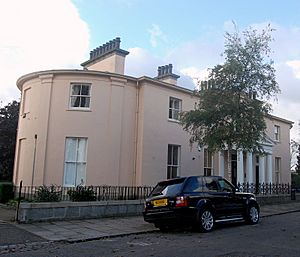William Henderson (philanthropist) facts for kids
Sir William Henderson (born April 10, 1826 – died June 9, 1904) was an important Scottish businessman and a kind person who helped others. He was known for his work in shipping and for his efforts to improve the city of Aberdeen.
Early Life and Business
Henderson was born in a place called Aberdour in Aberdeenshire, Scotland. His father was a farmer. His first job was at a bank in Fraserburgh. Soon after, he moved to Aberdeen to work for the Aberdeen White Star Line. This was a big shipping company started by George Thompson. The company owned famous clipper ships, like the Thermopylae.
Henderson traveled a lot for the company's business. In 1886, he became the main leader of the company when George Thompson retired. This was a time when sailing ships were being replaced by newer steamships.
Public Service and Helping Others
In 1885, Henderson joined the Aberdeen Town Council. This is like a local government for the city. In November 1886, he was chosen to be the Lord Provost of Aberdeen. This is similar to being a mayor. He served in this role until 1889.
While he was on the council, Henderson helped with many important projects. He played a key role in rebuilding the Aberdeen Royal Infirmary, which is a hospital. This was done to celebrate Queen Victoria's 50 years as queen in 1887. He also helped build the Public Library buildings in Aberdeen. Henderson was a member of the Liberal political party. After he finished his time as Lord Provost, he was given the special title of a deputy lieutenant of Aberdeen.
Henderson was also very active in the Free Church of Scotland. He was involved in many projects to help people and improve the community. Because of his good work, he was made a knight by Queen Victoria in 1893. This meant he could be called "Sir William Henderson." In 1895, Aberdeen University gave him an honorary degree for his achievements.
Family Life
In 1852, William Henderson married one of George Thompson's daughters. They had a large family with five sons and five daughters. From 1857, they lived in a house called Devanha House. This house is now considered a historic building.


